The Real-World Impact of Chitosan on Growth, Immunity, and Gut Health of Farm Animals
What is Chitosan?
Chitosan is a natural biopolymer derived from chitin (pronounced, “Kite-in” with emphasis on “kite”). Chitin, and its derivative, chitosan, by extension, is the second most abundant natural polysaccharide found in nature after cellulose. Chitin is commonly found in the exoskeletons of crustaceans like crabs, shrimps, lobsters, insects, and the cell wall of fungi such as the oyster mushroom. There is a 5%-7% concentration of chitin in the cell wall of most fungi.

What are the benefits & functions of chitosan in animal feed?
Chitosan, sourced from mushrooms, mycelium or shellfish, offers several benefits and functions when used as a feed additive in animal nutrition. Here are the key advantages:
Benefits of Chitosan in Animal Feed
- Enhanced Growth in Animals with Chitosan-Supplemented Feed:
- Improved growth rates:
- Chitosan may contribute to better growth rates in animals when added to their feed.
- This is likely due to a combination of factors related to chitosan’s properties.
- Lower antimicrobial influences:
- Chitosan has natural antimicrobial properties that may help reduce harmful bacteria in the animal’s digestive system.
- This can lead to a healthier gut environment, potentially reducing the need for antibiotics.
- Enhanced nutrient absorption:
- Chitosan may improve the absorption of nutrients from feed in the animal’s digestive tract.
- This could be due to its ability to form a thin film along the intestinal wall, potentially aiding in nutrient uptake.
- Potential prebiotic effects:
- Some studies suggest chitosan may have prebiotic properties, promoting the growth of beneficial gut bacteria.
- A healthier gut microbiome can contribute to better overall health and growth.
- Immune system support:
- Chitosan’s immunomodulatory properties may help strengthen the animal’s immune system.
- A stronger immune system can indirectly support better growth by reducing the energy spent fighting off infections.
- Potential fat-binding properties:
- In some cases, chitosan may help reduce fat absorption, which could be beneficial for managing animal body composition.
- Improved growth rates:
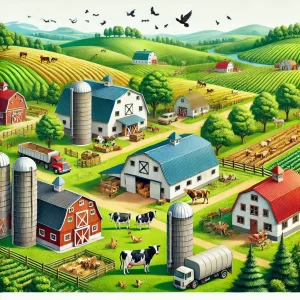
- Improved Gut Health after feeding Animals with Chitosan:
- Promoting healthy gut microbiota balance:
- Vegetal chitosan may act as a prebiotic, supporting the growth of beneficial gut bacteria.
- It can help create an environment that favors beneficial microorganisms over harmful ones.
- Better digestion:
- Chitosan may improve the efficiency of nutrient absorption in the digestive tract.
- It could potentially aid in the breakdown of certain compounds, making them more easily digestible.
- Antimicrobial properties:
- Chitosan’s natural antimicrobial effects may help control harmful bacteria in the gut without disrupting beneficial flora.
- Improved intestinal barrier function:
- Chitosan may help strengthen the gut lining, reducing the risk of “leaky gut” and associated health issues.
- Reduced inflammation:
- The anti-inflammatory properties of chitosan could help maintain a healthier gut environment.
- Enhanced immune function:
- A healthier gut microbiome supported by chitosan can contribute to stronger overall immune responses.
- Potential reduction in digestive disorders:
- By promoting a balanced gut environment, chitosan may help reduce the incidence of certain digestive issues.
- Promoting healthy gut microbiota balance:
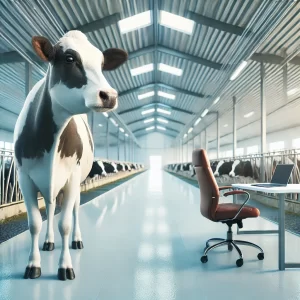
- Enhanced Immune Response in Animals with Chitosan:
- Immune system boosting:
- Chitosan may stimulate the production and activity of immune cells.
- It can enhance both innate and adaptive immune responses in animals.
- Increased disease resistance:
- By strengthening the immune system, chitosan may help animals fight off infections and diseases more effectively.
- Adjuvant properties:
- Chitosan can act as an adjuvant, enhancing the effectiveness of vaccines when used in animal health applications.
- Anti-inflammatory effects:
- Chitosan’s anti-inflammatory properties may help modulate immune responses, potentially reducing harmful inflammation.
- Gut health improvement:
- By promoting a healthier gut microbiome, chitosan indirectly supports overall immune function, as a significant portion of the immune system is located in the gut.
- Antioxidant activity:
- Chitosan’s antioxidant properties may help protect immune cells from oxidative stress, maintaining their function.
- Wound healing support:
- In topical applications, chitosan can aid in wound healing, which is part of the immune response.
- Immune system boosting:
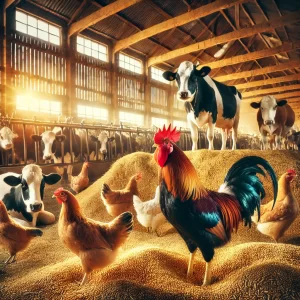
- Reduced Cholesterol Levels in Animals with Chitosan:
- Cholesterol-binding properties:
- Chitosan can bind to dietary fats and cholesterol in the digestive tract, potentially reducing their absorption.
- Potential for healthier animal products:
- By lowering cholesterol levels in animals, this could theoretically lead to healthier meat, milk, or eggs for human consumption.
- Lipid metabolism effects:
- Some studies suggest chitosan may influence lipid metabolism in animals, potentially leading to lower overall cholesterol levels.
- Variability in effectiveness:
- The cholesterol-lowering effects can vary depending on the animal species, chitosan dosage, and overall diet composition.
- Potential impact on nutrient absorption:
- While chitosan may reduce cholesterol absorption, it’s important to consider its potential effects on the absorption of other essential nutrients.
- Need for balanced approach:
- Any use of chitosan for cholesterol reduction in animals should be carefully balanced with overall nutritional needs and animal health considerations.
- Ongoing research:
- More studies are needed to fully understand the long-term effects and optimal use of chitosan for cholesterol management in various animal species.
- Cholesterol-binding properties:
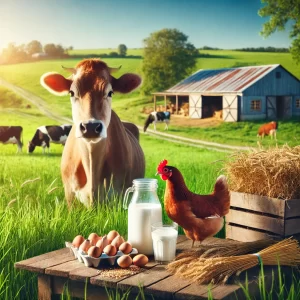
- Detoxification Properties of Chitosan in Animals:
- Binding to toxins and heavy metals:
- Chitosan can bind with various toxins and heavy metals in the digestive tract.
- This binding can potentially reduce the absorption of these harmful substances into the animal’s body.
- Safer animal products:
- By reducing the absorption of toxins, chitosan could theoretically contribute to producing safer animal products for human consumption.
- Chelation properties:
- Chitosan acts as a chelating agent, forming complexes with metal ions, which can aid in their removal from the body.
- Environmental contaminant reduction:
- In animals exposed to environmental pollutants, chitosan supplementation might help mitigate the effects of these contaminants.
- Liver support:
- By reducing the toxic load on the liver, chitosan may indirectly support liver health and function in animals.
- Variability in effectiveness:
- The detoxification efficacy of chitosan can vary depending on factors such as the type of toxin, animal species, and dosage.
- Binding to toxins and heavy metals:
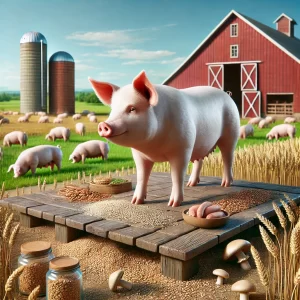
What types of animals benefit from the inclusion of chitosan as a feed additive?
Chitosan can be used as a feed additive for a wide range of animals in agriculture and aquaculture. Here are some of the key types of animals that can benefit from the inclusion of chitosan in their diets:
- Benefits of Chitosan for Poultry (Chickens, Turkeys, and Other Poultry):
- Growth promotion:
- Chitosan may help improve feed efficiency and growth rates in poultry.
- This could lead to better meat yield and overall productivity.
- Immune system enhancement:
- Chitosan can boost the immune system of poultry, helping them resist diseases and infections more effectively.
- This may reduce the need for antibiotics and improve overall flock health.
- Gut health improvement:
- Chitosan may promote a healthy balance of gut microbiota in poultry.
- This can lead to better digestion and nutrient absorption.
- Antimicrobial properties:
- The natural antimicrobial effects of chitosan may help control harmful bacteria in the poultry gut.
- Egg quality:
- Some studies suggest chitosan supplementation may improve egg quality in laying hens.
- Stress reduction:
- Chitosan’s antioxidant properties may help poultry better cope with environmental stresses.
- Potential prebiotic effects:
- Chitosan may act as a prebiotic, promoting the growth of beneficial gut bacteria in poultry.
- Growth promotion:
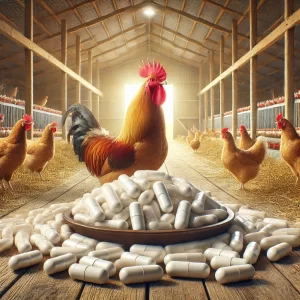
- Benefits of Chitosan for Swine:
- Enhanced growth rates:
- Chitosan supplementation may help improve overall growth rates in pigs without using antibiotics. 3 https://www.ncbi.nlm.nih.gov/pmc/articles/PMC5682002/
- This could lead to faster weight gain and potentially shorter time to market.
- Improved feed efficiency:
- Chitosan can help pigs utilize their feed more effectively.
- This may result in better conversion of feed to body mass, reducing overall feed costs.
- Boosted immune function:
- Chitosan can strengthen the immune system of pigs, potentially making them more resistant to diseases.
- This may reduce the need for antibiotics and improve overall herd health.
- Reduced fat content in pork:
- Some studies suggest that chitosan supplementation may help reduce fat deposition in pigs.
- This could potentially lead to leaner pork products, which may be desirable for consumers.
- Gut health improvement:
- Chitosan may promote a healthier balance of gut microbiota in pigs.
- This can lead to better digestion and nutrient absorption.
- Antimicrobial properties:
- The natural antimicrobial effects of chitosan may help control harmful bacteria in the pig’s digestive system.
- Potential stress reduction:
- Chitosan’s antioxidant properties may help pigs better cope with environmental stresses.
- Enhanced growth rates:

- Benefits of Chitosan for Ruminants:
- Improved gut health:
- Chitosan may help maintain a healthy balance of microorganisms in the rumen and intestines.
- This can lead to more efficient digestion and fermentation processes.
- Enhanced nutrient absorption:
- By promoting a healthier gut environment, chitosan may improve the absorption of nutrients from feed.
- This could potentially lead to better feed efficiency and animal performance.
- Immune-boosting properties:
- Chitosan can help strengthen the immune system of ruminants.
- This may result in increased resistance to various diseases and infections.
- Potential methane reduction:
- Some studies suggest that chitosan might help reduce methane production in ruminants, which could have environmental benefits.
- Improved rumen function:
- Chitosan may help optimize rumen pH and fermentation patterns.
- This could lead to better overall digestive efficiency.
- Possible parasite control:
- Chitosan has shown some potential in helping control internal parasites in ruminants.
- Antioxidant effects:
- The antioxidant properties of chitosan may help protect ruminants from oxidative stress.
- Improved gut health:
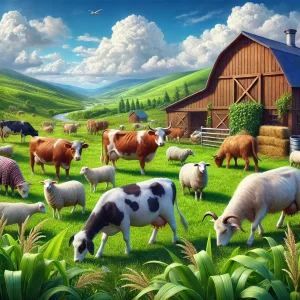
- Benefits of Chitosan in Aquaculture:
- Improved water quality:
- Chitosan can bind with toxins and impurities in water, helping to maintain cleaner aquaculture environments.
- This can lead to better overall health for fish and shrimp.
- Enhanced disease resistance:
- Chitosan has been shown to boost the immune system of aquatic species.
- This can help fish and shrimp better resist various diseases common in aquaculture settings.
- Antimicrobial properties:
- Chitosan’s natural antimicrobial effects can help control harmful bacteria in aquaculture systems.
- This may reduce the need for antibiotics in fish and shrimp farming.
- Growth promotion:
- Some studies suggest that chitosan supplementation can enhance growth rates in certain aquatic species.
- Wound healing:
- Chitosan’s properties can aid in faster wound healing in fish, which is particularly important in high-density aquaculture environments.
- Biofilm reduction:
- Chitosan can help reduce biofilm formation in aquaculture tanks and equipment, leading to improved hygiene.
- Potential feed additive:
- When used as a feed additive, chitosan may improve nutrient absorption and feed efficiency in aquatic species.
- Environmental sustainability:
- By improving water quality and reducing the need for chemical treatments, chitosan can contribute to more sustainable aquaculture practices.
- Improved water quality:

- Benefits of Chitosan for Pets (Dogs and Cats):
- Improved digestive health:
- Chitosan may help promote a healthy balance of gut bacteria in pets.
- This can lead to better digestion and nutrient absorption.
- Reduced cholesterol levels:
- Some studies suggest chitosan can help lower cholesterol levels in animals, which may be beneficial for overweight pets or those with certain health conditions.
- Enhanced immunity:
- Chitosan has immune-boosting properties that could help strengthen pets’ natural defenses against diseases.
- Potential weight management:
- Chitosan’s ability to bind to fats might assist in weight control for overweight pets, though this should be done under veterinary supervision.
- Dental health:
- Some pet dental products incorporate chitosan for its antimicrobial properties, which may help reduce plaque and tartar buildup.
- Wound healing:
- Topical applications of chitosan have shown promise in accelerating wound healing in animals.
- Potential anti-inflammatory effects:
- Chitosan’s anti-inflammatory properties might be beneficial for pets with certain inflammatory conditions.
- Improved digestive health:

Chitosan is particularly valuable in these applications because of its natural origin and biodegradability, making it a safe and environmentally friendly choice for animal feed additives.
What are the forms of chitosan used in animal feed?
Chitosan can be incorporated into animal feed in several forms to suit different types of diets and feeding practices.
And the addition ratio of chitosan in animal feed can vary widely depending on the specific form used, the type of animal, the intended health benefits, and the regulatory guidelines in place.
Here are the common forms in which vegetal chitosan is used, along with some general guidelines on the addition ratios for different forms of chitosan and their suitable application areas, and breakdown of which type of chitosan is suitable for each form:
- Powder: The most common form, chitosan powder is easily mixed with other feed ingredients. It’s versatile for use in both solid and liquid feed formulations.
- Addition Ratio: Typically ranges from 0.1% to 2% of the total feed weight.
- Suitable Chitosan Types: Acid-soluble chitosan with a viscosity range of 20-100cps or 100-500cps is typically used in powder form. Chitosan oligosaccharide may also be suitable for specific applications where rapid absorption is desired.
- Corresponding Applications:
- Growth promotion and immune enhancement in poultry, swine, and ruminants.
- Gut health improvement and toxin binding.
- Incorporation into premixes or complete feeds.

- Pellets: Chitosan can be pelletized along with other feed components. Pellets are particularly popular in livestock and aquaculture feeds as they are easy to handle and distribute.
- Addition Ratio: Generally around 0.5% to 1.5%, mixed with other feed ingredients before pelletization.
- Suitable Chitosan Types: Acid-soluble chitosan with a viscosity range of 100-500cps or 500-1000cps is commonly used for pelleting. Chitosan hydrochloride may also be suitable for specific applications.
- Corresponding Applications:
- Livestock and aquaculture feeds where uniform mixing and controlled release of active ingredients are desired.
- Improved feed efficiency and growth promotion.
- Disease resistance enhancement.

- Flakes: Similar to powder, flakes of chitosan can be mixed into feeds. This form might be preferred for its ease of mixing in certain types of animal diets.
- Addition Ratio: Similar to powder, around 0.1% to 2%.
- Suitable Chitosan Types: Acid-soluble chitosan with various viscosity ranges can be used in flake form, depending on the desired application.
- Corresponding Applications:
- Similar to powder form, suitable for incorporation into feeds where stability and ease of mixing are important.
- May be preferred in certain feed manufacturing processes.

- Liquid Solutions: Chitosan can be dissolved in water to create a liquid feed supplement. This form is beneficial for precise dosage control and is especially useful in aquaculture or for young animals.
- Addition Ratio: Can vary significantly, often used at concentrations of 1% to 5% in the final feed solution.
- Suitable Chitosan Types: Acid-soluble chitosan with a viscosity range of 20-100cps or 100-500cps is commonly used for liquid solutions. Chitosan hydrochloride or carboxymethyl chitosan may also be suitable.
- Corresponding Applications:
- Aquaculture and young animal feeds where liquid feeding systems are employed.

- Coated Forms: Chitosan can be coated onto feed pellets to control the release of active compounds or to protect the integrity of the chitosan in the digestive tract.
- Addition Ratio: Usually around 0.5% to 1%, depending on the coating efficiency and the target release profile.
- Suitable Chitosan Types: Acid-soluble chitosan with a viscosity range of 100-500cps or 500-1000cps is often used for coating applications. Chitosan oligosaccharide may also be suitable.
- Corresponding Applications:
- Controlled release formulations for targeted health benefits in livestock and aquaculture.
- Protection of active ingredients during feed processing and storage.

- Gel: In some applications, chitosan may be used in a gel form, particularly useful for specialized dietary needs or in veterinary health products.
- Addition Ratio: Less common, but typically used at higher concentrations, such as 1% to 10% in specific targeted applications.
- Suitable Chitosan Types: Acid-soluble chitosan with a viscosity range of 100-500cps or 500-1000cps is commonly used for gel formulations. Chitosan hydrochloride may also be suitable.
- Corresponding Applications:
- Veterinary health products.
- Specialized dietary supplements for specific animal health needs.
- Controlled release formulations for prolonged effects.
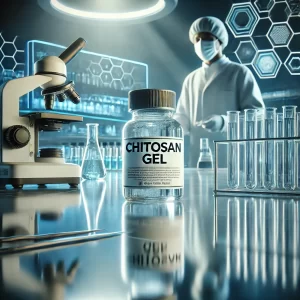
It’s crucial to consult with animal nutrition experts and follow regulatory guidelines when incorporating chitosan into animal feed to ensure safety, efficacy, and compliance.
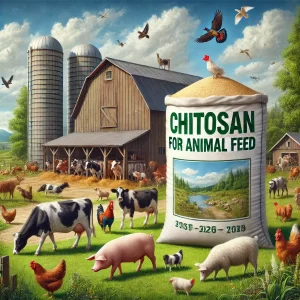
References:
- https://www.sciencedirect.com/science/article/pii/S2666893923000506?via%3Dihub Application of low molecular weight chitosan in animal nutrition, husbandry, and health: A review
- https://www.ncbi.nlm.nih.gov/pmc/articles/PMC10709949/ Chitosan coating silver nanoparticles as a promising feed additive in broiler chickens
- https://www.ncbi.nlm.nih.gov/pmc/articles/PMC5682002/ Low-Molecular-Weight Chitosan Supplementation Increases the Population of Prevotella in the Cecal Contents of Weanling Pigs
Book a Free Consultation
If you don’t know what type of chitosan is best for your situation, Book an appointment. we will offer you an initial 30-minute consultation and product quotation at no charge.
